Ho Chi Minh City is a vibrant metropolis in Southern Vietnam. Locals will say Saignon, as it used to be called. According to us, a perfect place for a city trip. Ho Chi Minh City has one of the biggest airports in Vietnam, which makes the city a convenient place to start or end your Vietnam round trip.
When it’s your first time in Ho Chi Minh City, you definitely want to spend your time in District One. That’s where the main attractions can be found. When booking your accommodation we would recommend you to search for a hotel in this area. That way, you can visit everything by foot.
The city of Ho Chi Minh has not only a lot of cultural sights but also lots of cute restaurants and bars. You won’t get bored in this city! Here are 16 must do’s in Ho Chi Minh City (in no particular order)!


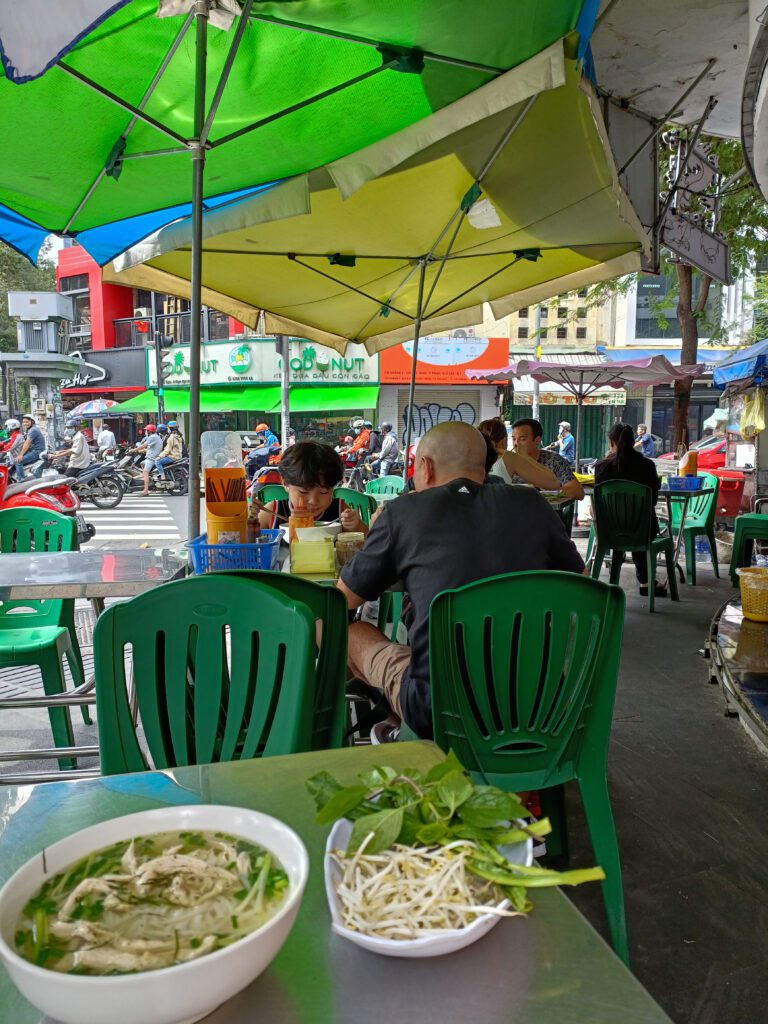
1. War Remnants Museum
The War Remnants Museum lies close to Tao Dan Park and is a popular stop for tourists. The museum is worth the visit, especially if you are interested in the Vietnamese war. Here you can see it from the point of view of the Vietnamese. We were a bit disappointed as the only things on display are American. The exhibitions show only how the USA invaded the country and everything America has done during the war. Nothing about the Vietnamese. The entry price is VND 40.000 (€1.80) per person
2. Reunification Palace
Walking outside the War Remnants Museum you easily bump into Reunification Palace or Independence Palace. As the name speaks, this is the place where the unconditional surrender was declared and the fall of Saigon took place. This makes it a special place for the Vietnamese people. You can visit the palace for VND 40.000 (€1,60) if you’re interested to see the 100 rooms inside.
3. Cu Chi Tunnels
These famous tunnels are located outside the city but are actually a must-see for everyone interested in the Vietnamese War. You can visit this immense historical tunnel complex by yourself or with a tour starting from the city. You will not only see the tunnels but also have a closer look at the traps the Vietnamese made.
4. Nguyen Hue Walking Street
There is a lot to see on Nguyen Hue Walking Street. Locals come together and kids are playing around. The street starts at the Townhall and ends at the river. Our absolute favourite place in the street is the Café Apartments. This old building is transformed into a coffee and foodies hotspot. In every apartment, you find another cute place where you can give yourself some rest after walking a lot in the city.
The Café Apartments is free but they ask for a small commission for using the elevator. If you walk to the third floor, you can use the elevator for free.

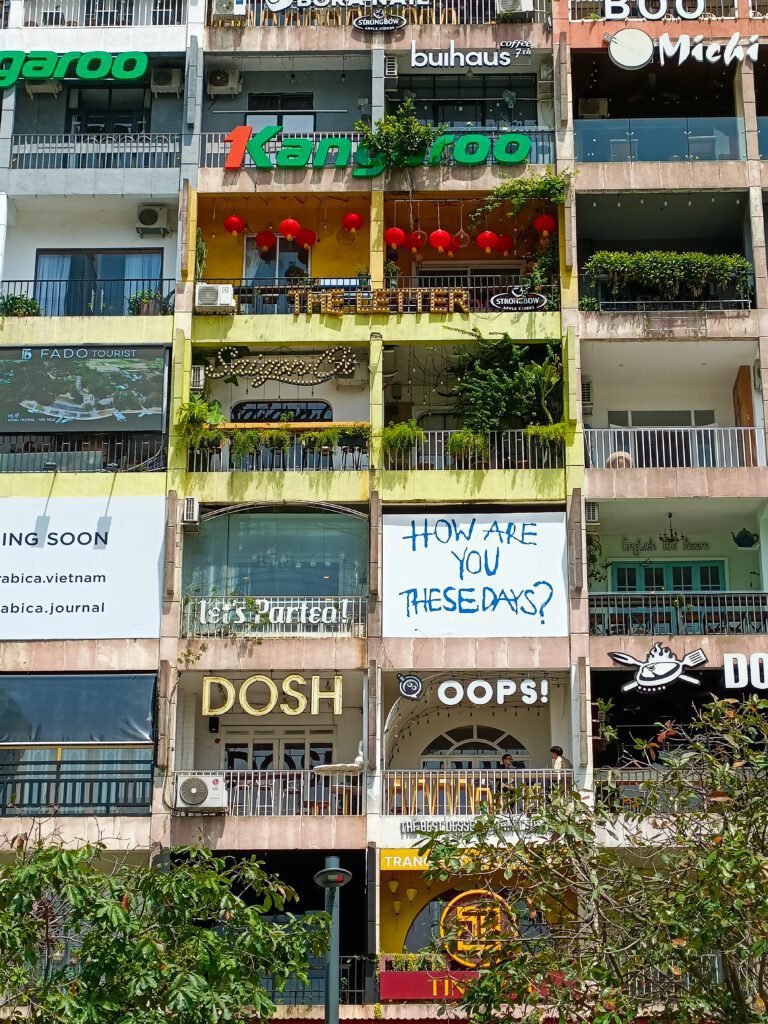

5. Opera House
When walking down Nguyen Hue Walking Street, have a look at the Opera House. It’s located on a side street and has a nice little square in front of it. The building itself is one of the many French colonist heritage sites in the city.
6. Notre-Dame
Walking behind the Townhall will lead you to the Notre-Dame Basilisk. This building dates from 1880 and lies in the centre of the city. When we visited the place, it was under construction but definitely worth a visit if you are in the area. Not only for the basilisk itself but there is a small square in front of it as well.
7. Sai Gon Central Post Office
Next to the Notre-Dame Basilisk, you can see a stately monumental building dating from 1891. This is the Central Post Office, admirable for its beautiful original details and its large hall with arched ceiling. The building was designed by Gustave Eiffel. If you haven’t sent any postcards to your family and friends, this is the place!
8. Ho Chi Minh City Book Street
You don’t need to be a book lover to walk through Ho Chi Minh City Book street. It’s just around the corner from Notre Dame and the Post Office. This small street is filled with bookshops felled with all kinds of literature. Expect to see many Vietnamese books, but also a few English books, from Harry Potter to Charles Dickens.



9. China Town
Cholon is the biggest China Town in Vietnam. Walk through Binh Tay Market, have some street food in the small alleys and visit Thien Hau Pagoda. The best way to immerse yourself into Cholon, the China Town of Ho Chi Minh City.
10. Bến Thành Market
Where can you experience a place better than at a local market? This indoor market is huge, with different departments going from clothing to fresh fish. Definitely worth to checking out!
11. Tan Dinh Church
If you want to see a pink church, this is for you. Officially, it’s located in District three, but its close proximity to District one and its unique colour makes it a popular location for tourists. Bonus, there is no entrance fee!
12. Bùi Viện
If you are in Ho Chi Minh, you cannot miss out on this street. At day, there is nothing to do here. But at night this street changes completely. All the lights go on, the restaurants open up, there is music playing everywhere, street artists start breathing fire, and people trying to lure you in everywhere. There is so much happening, but don’t forget to keep a check on your personal belongings. It is definitely a unique experience.
13. Bitexco Financial Tower
This iconic skyscraper counts 68 levels. If you want to have a nice view of the city you should go to the Saigon Skydeck. Tickets are pricy for backpackers, but if you want to experience this, you should definitely go! You can buy tickets at the entrance. Do this instead of buying online, as it is always more expensive with third parties.


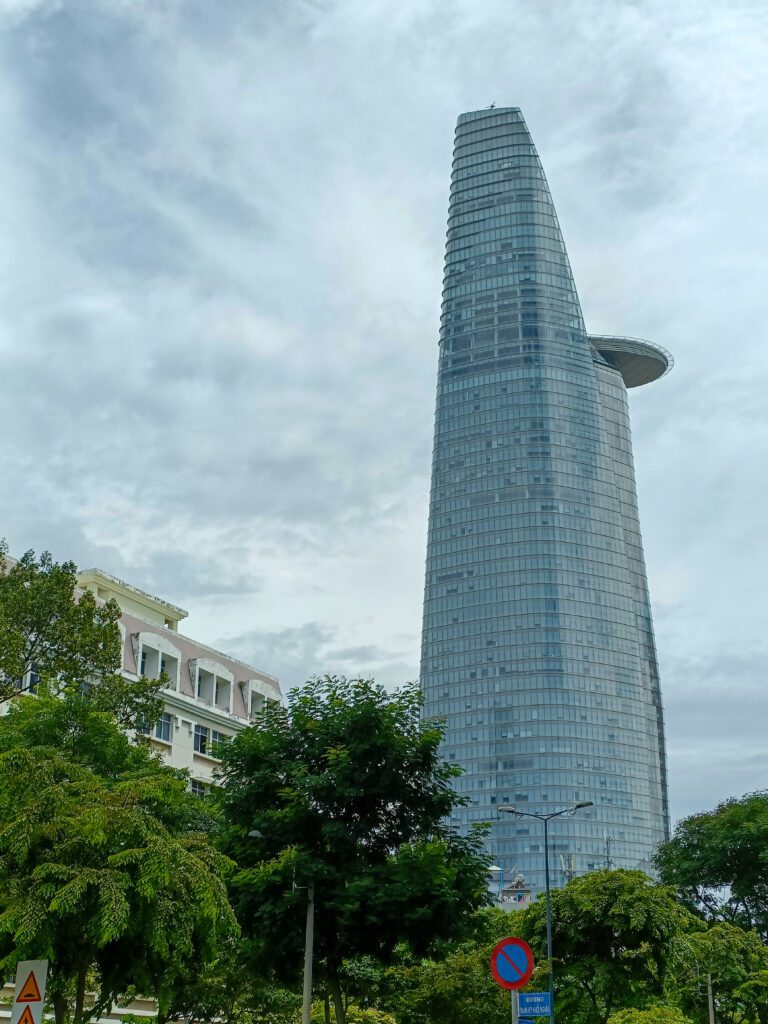
14. Jade Emperor Pagoda
This pagoda is described as one of Ho Chi Minh City’s most revered and popular religious destinations. The Jade Emperor Pagoda is a beauty of ancient Chinese architecture. Make a stop here if you want to see it yourself.
15. Vintage street
If you’re a vintage lover, you should check out Đ. Lê Công Kiều. This street is filled with vintage shops. Walk a bit further and you are at the Ho Chi Minh City Museum of Fine Arts. We didn’t visit it ourselves as we read the building itself is more fascinating than the art inside.
16. Japan Town
We found this one by accident and we loved it! The cute alleys are filled with Japanese restaurants and we had some of the best dinners ever.
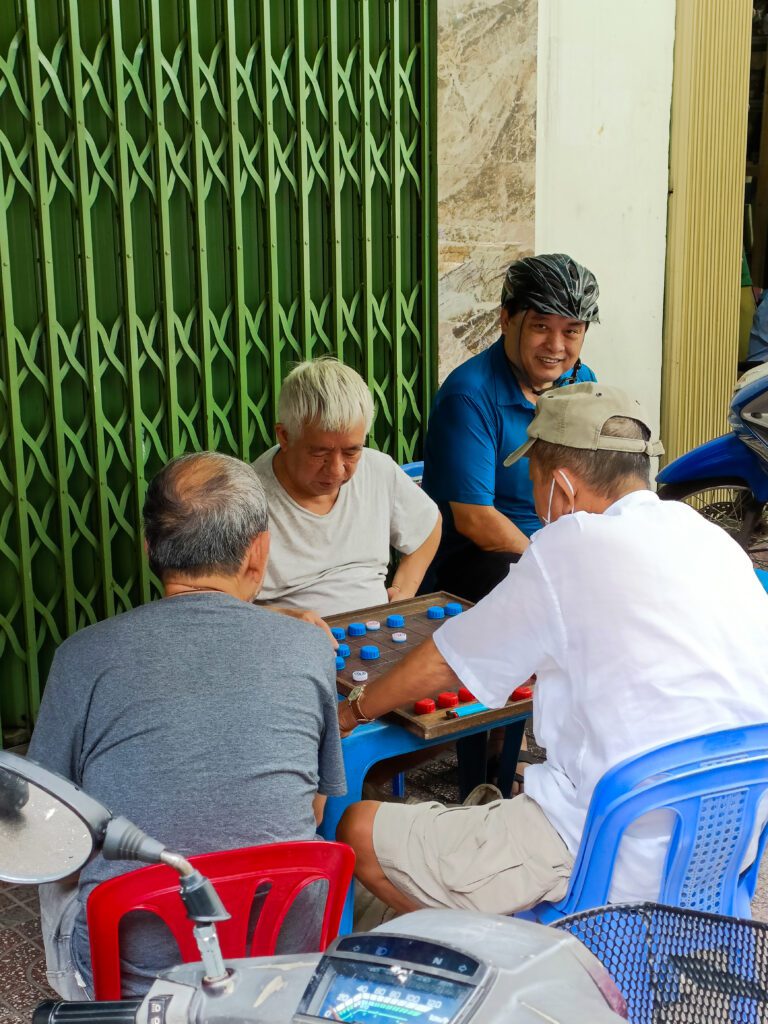


How to get there
Most likely you will arrive in Ho Chi Minh City by plane or via sleeper bus from another place in Vietnam. There is no train infrastructure.
When you arrive in Ho Chi Minh City by plane, you’ll likely get out of the airport and be approached by multiple taxi drivers. They can take you to your hotel for decent prices. If you step only 20 meters further, there are minibuses waiting for passengers to go to the city. This option will only cost you around €0,50 and the buses leave when they are full. Have a look on Google Maps to see which bus number you need to take. You can use the airport WiFi if you haven’t checked beforehand.
Another way to get to Ho Chi Minh City is by sleeper bus. These buses come from different areas in Vietnam and will take you to the centre of Saignon. Possibly, you want to take another public bus or Grab/taxi to get to your accommodation. More about this underneath. The best tip we can give for the sleeper buses is to not buy your ticket online! That’s something we had to learn the hard way. Locals just go to a bus office and buy their tickets some days before departure. Another good option is to ask the hotel staff if they can purchase the tickets for you.
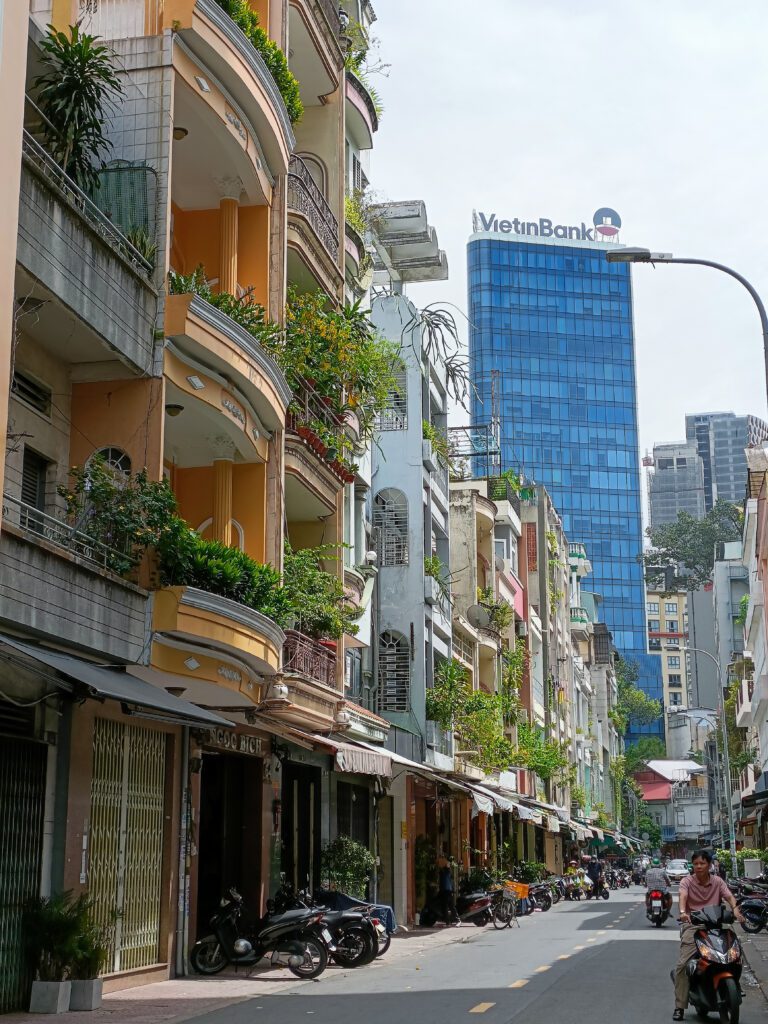


How to get around
Ho Chi Minh City is a stretched-out and huge city. Distances can be long if you’re exploring multiple districts. For long distances, there are three good options.
Bus
It’s very easy to take a bus in Ho Chi Minh City. They drive everywhere and at any time. The easiest way to find the bus you need is by using Google Maps. This app will show you where the bus stop is located and how frequently the bus comes. Buses drive regularly, there is no timetable, they just keep driving. You’ll never wait longer than 10 minutes.
When you enter the bus, you should take a seat and someone will come to you for your bus ticket. You mostly pay in cash and prices are around €0,50 (VND 6.000 – 7.000), depending on the line you’re on. You say to the woman or man where you’re going, and they will make sure the bus stops at that bus stop.
Grab
Another easy way to get around is taking a Grab. This is the Asian version of Uber. Prices are fixed on the app, so no bargaining is needed. The driver picks you up where you are and will bring you to where you want to go. The fun thing about Grab is that you can also go by motorbike instead of taking a car. This is an adventurous option as you hop on a stranger’s scooter. Taking this option is cheaper and faster, but don’t expect a relaxed ride as traffic can get busy.
Taxi
The last option to get around is taking a taxi. This option isn’t much more expensive than taking a Grab and is a comfortable way to get around.

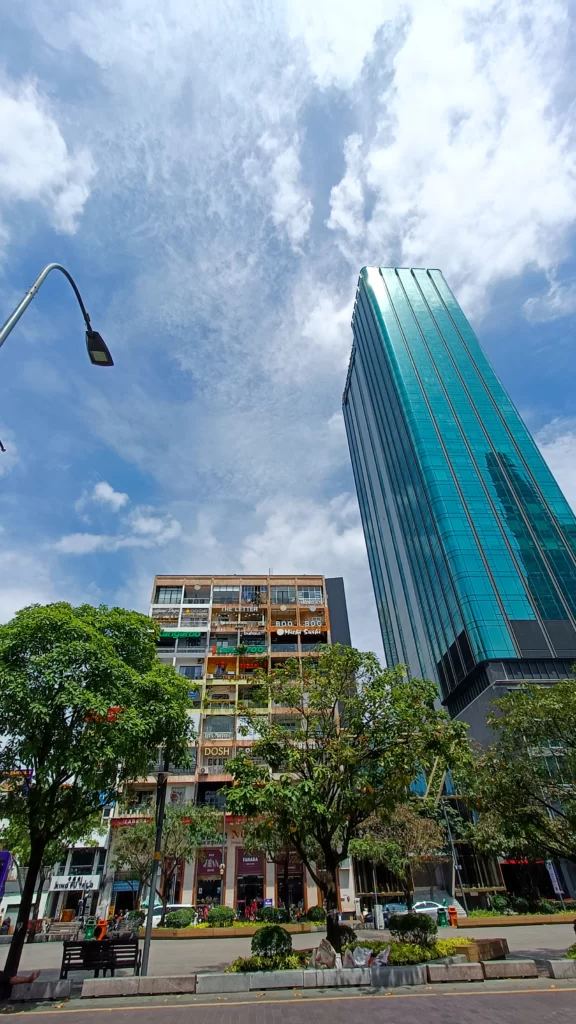


| Cookie | Duration | Description |
|---|---|---|
| cookielawinfo-checkbox-analytics | 11 months | This cookie is set by GDPR Cookie Consent plugin. The cookie is used to store the user consent for the cookies in the category "Analytics". |
| cookielawinfo-checkbox-functional | 11 months | The cookie is set by GDPR cookie consent to record the user consent for the cookies in the category "Functional". |
| cookielawinfo-checkbox-necessary | 11 months | This cookie is set by GDPR Cookie Consent plugin. The cookies is used to store the user consent for the cookies in the category "Necessary". |
| cookielawinfo-checkbox-others | 11 months | This cookie is set by GDPR Cookie Consent plugin. The cookie is used to store the user consent for the cookies in the category "Other. |
| cookielawinfo-checkbox-performance | 11 months | This cookie is set by GDPR Cookie Consent plugin. The cookie is used to store the user consent for the cookies in the category "Performance". |
| viewed_cookie_policy | 11 months | The cookie is set by the GDPR Cookie Consent plugin and is used to store whether or not user has consented to the use of cookies. It does not store any personal data. |